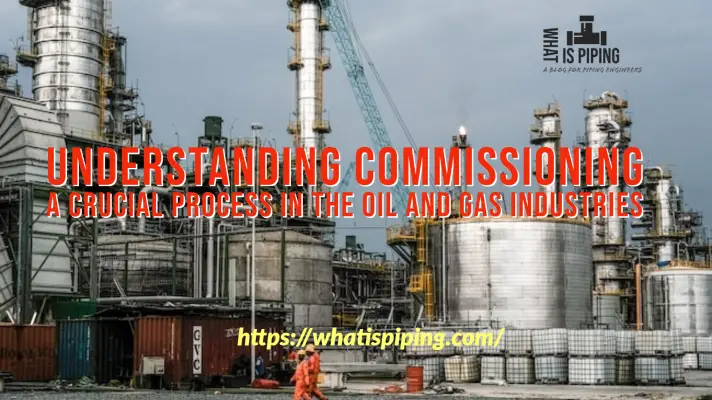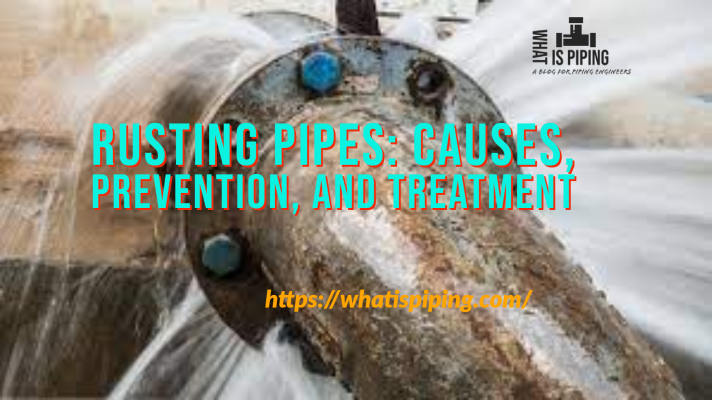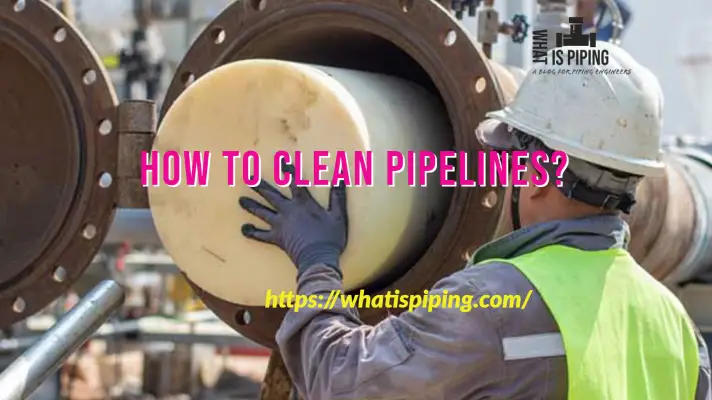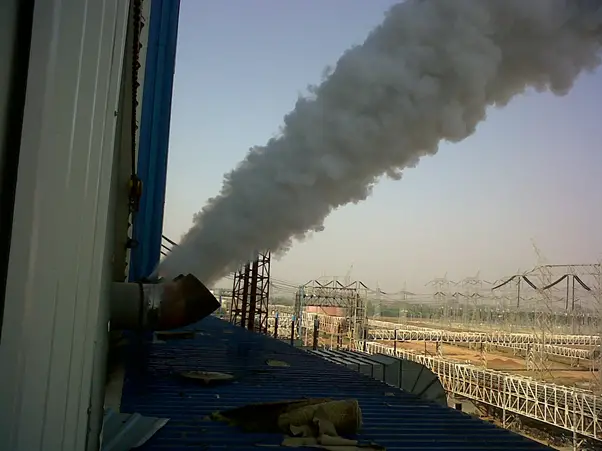Pipe Flushing is a pre-commissioning activity. Piping and pipeline systems are flushed before commissioning the line or put into action. Pipeline or Pipe Flushing can be defined as the activity where a sufficient quantity of fluid is pumped through the piping or pipeline section with sufficient velocity to forcibly remove construction debris, dust, rust, mill scale, oil, grease, or any other kind of impurities. The section of piping or pipeline system requiring flushing is defined beforehand and then a detailed pipe flushing plan is made for execution.
Pipe flushing is usually done for pipes with sizes 10 inches or less. For larger pipes, the fluid quantity requirement becomes so large that it slowly becomes impractical. So, full-bore pipe flushing is usually not done for pipes of size 12 inches or larger.
Types of Pipe Flushing
Depending on the fluid used for the operation, pipe flushing can be of two types:
- Chemical/Water flushing and
- Oil flushing
Chemical flushing is the most common method used to remove garbage elements from the piping and pipeline systems using plain water and water with chemicals. On the other hand, oil flushing is carried out after chemical flushing to ensure the fluid that will flow through the pipelines are free from any kind of contamination. Oil flushing is used for lube oil systems.
Working Principle of Pipe Flushing
Pipe flushing removes the unnecessary elements from the piping system by the force of flushing fluid which passes through the system at high velocity. The force applies to the foreign elements and becomes loose which then flows along with the flushing fluid making the pipe and pipeline surface clean.
So, the important factor for pipe flushing operation is the fluid velocity. The velocity required for pipeline flushing operation is decided in one of the following two ways:
- the velocity is decided such that it achieves a Reynolds Number (NR) of 4000 for Piping and of 3000 for Tubing 1/2″ and below, or
- the velocity must be equal to or more than the normal operating velocity of the actual fluid.
Pipe Flushing Criteria
A detailed pipe flushing plan should provide details of pipeline flushing criteria. Some of the basic guidelines for pipe flushing criteria are listed below:
Flushing Medium: Stainless steel pipes shall be flushed with potable or demineralized water having a chloride content of less than 20 ppm. However, for normal carbon steel or alloy steel, plant water, potable water or any other approved flushing medium can be used.
Flushing Duration: Once the pipe flushing is started in open-ended systems, It is usually stopped after 5 minutes of clear water discharging started.
For closed circuit loops, flushing can be stopped once the pump strainer is found to be free from foreign materials and the circulating water is clean.
Flushing Liquid Volume: Sufficient volume of water should be available such that the complete pipe is full and exert sufficient force at high velocity on foreign matters. In normal cases, the water from the fire water distribution network is used for pipe flushing. Separate pumps shall be used for generating the required velocity.
Pipe Flushing Standards
The common industry standard governing the procedure of pipe flushing is ASTM D4174. Other considerable pipe-flushing standards are ISO 5910, ISO 28521, ISO 5911, SHELL DEP 31405030, etc.
Basic Pipe Flushing Guidelines
Some of the considerable pipe-flushing guidelines are listed below:
- A detailed flushing plan should instruct about the types, steps, and duration of flushing.
- Pipe flushing should be done using normal operation flow direction.
- Pipeline flushing should preferably be done from the highest to the lowest elevation.
- The pipe flushing activity should be supervised and inspected by a commissioning engineer.
- Flushing should be performed through fully open flanges/ open pipe ends and never be carried out through smaller openings such as drains or vents.
- The proper capacity of the pump shall be selected for pipe flushing activity.
- All required temporary fittings like a hose, blind flange, strainer, gasket, etc must be fitted before flushing and shall be removed immediately after completion of pipe flushing.
- To avoid corrosion potential, the system shall be de-watered immediately after flushing and make it dry.









Hi sir,
All your notes related to piping is awesome ur Explanation is very easy to understand with out confused. Please share me if you have any non metallic RTr piping for UG
Now I understand that pipe flushing is a process done to remove trapped elements in the piping system and unblock the channels. I would imagine how poorly equipment will run without these treatments. I also wonder how oil flushing works and the common industries it is done for.
HOLA BUEN DIA Y FELIZ AÑO 2023
TE COMENTO CONFORME A LOS 15 AÑOS DE EXPERIENCIA QUE TENGO REALIZANDO LAVADO EN SISTEMAS, PRINCIPALMENTE ESTE TIPO DE LAVADO CON ACEITE SE REALIZA EN SISTEMAS DE LUBRICACIÓN COMPLEJAS POR ASI DECIRLO QUE TIENEN CONSIDERABLES METROS LINEALES DE TUBERIAS, NUESTRO ES EN LA INDUSTRIA PETROLERA DONDE LAS TURBOMAQUINARIAS SON PIEZA FUNDAMENTAL PARA EL BOMBEO DE ACEITE Y GAS, LO REALIZAMOS EN TURBOBOMBAS, TURBOCOMPRESORES, TURBOGENERADORES Y SISTEMAS DE ABASTECIMIENTO DE LUBRICACIÓN A ESTAS MAQUINARIAS
SALUDOS CORDIALES A TODOS
Pls name of chemical used for flushing, for SS, MS, Alloy, Gal.
Thanks,
what air assisted water flushing, how to achieve the flushing velocity. how is the set up? please help. thank you so much
What’s the posibility to recover back the same amount of oil used after flushing or what’s the acceptable recovered amount after flushing?
can compressed air be used for stainless pipeline flushing,if not why ,please reply
very nice
sir very good, all details explained in article its a good article for pipe flushing.
thanks got required information.